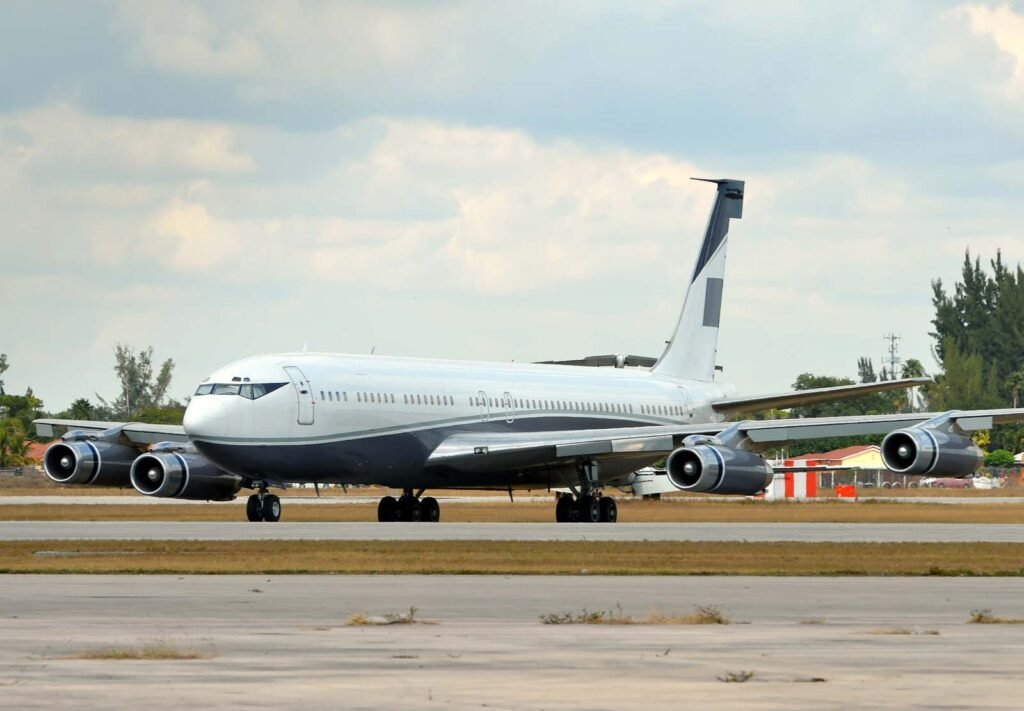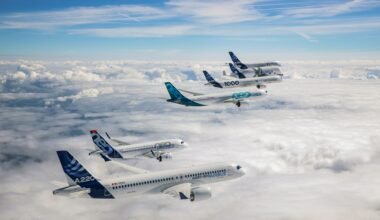The Boeing Company developed its first successful commercial passenger aircraft, Boeing B707, in the mid of 19th century. The aircraft had four engines having the capability of covering mid to long-range distances. Boeing’s Boeing 707 narrow-bodied aircraft had a swept-wing design, and it conducted its first flight on 20th December 1957. From entering commercial services in 1958, Boeing produced a total of 1010 B-707 till 1991.
Initially, Boeing designed this model for medium-haul flights. However, it soon spread its wings beyond the Atlantic Ocean and the continent. As it was the first commercial passenger aircraft of the company, hence Boeing credited it with the honor of commencing the era of commercial travel.

The lifespan of Boeing 707
Boeing had basically designed the prototype of B707 on the passenger version of the Dash-80. The first member of this family was 4402 meters long, with a wingspan of 39.9 meters, while the width of the fuselage was 3.8 meters. This aircraft had improved passenger capacity and long-range and fast speed than its predecessors.
Boeing had designed this model with a mission to respond to the customers’ preferences. Hence airlines acquired B-707 eagerly. That’s the reason PAN AM immediately took the delivery of 20 B-707s upon its arrival in the market. It flew for 8 hours and 41 minutes during its first commercial flight in 1958.
Throughout 1960, American Airlines excessively utilized this B-707 for domestic and transatlantic flights. Trans World Airlines used it for the last time in 1983 for a scheduled flight in the U.S. However, the Ultra-Low-Cost Carriers kept flying it, followed by Saha Airlines, which used it for commercial purposes until 2013. After 2013, the airlines finally ceased operating this introductory jetliner.
Boeing converted this 707 into 720 by modifying it for short to medium-range routes and successfully operating it on comparatively shorter runways. For this purpose, the designers reduced the length of the fuselage by 9 feet. Later on, they mounted turbofan engines and changed the flaps present at the leading edge. Boeing manufactured almost 154 of this modified 720 from 1959 to 1967 and was replaced by 727s and 737s later on.
B707 – The Trend Setter for the Successors
B-707 had such everlasting cabin facilities used as standards for the rest of the Boeing jets. These included installing more than 100 windows, which allowed airlines to go for flexible seating arrangements. Moreover, the doors at the front, rear, and left sides of the cabin acted as permanent features for the upcoming series of aircraft. Besides having an identical exterior to that of the DC-8, B-707 could fly at 20mph under its swept-back wings.
Therefore within a span of two years, B-707 changed the perception of traveling. It gave rise to a new dawn of traveling by earning a reputable image for itself and its company. Owe to its popularity, Boeing started receiving requests from people to use this model B-707 for naming their products. Following the trend, Jantzen swimwear named its collection of 1957 “the 707”.
B707 – The Source of Resilience for Boeing
The shifting of Boeing from making military aircraft to commercial jets is itself a strenuous process. The desire to make air travel the most reliable and safest mode of transport left Boeing with extreme pressure from its competitors. Despite lacking the required financial aid, Boeing dived into exploring the magnitude of risks. Since the Douglas DC-8 had quite resembling features like that of the B-707, hence Boeing had to derive its unique value proposition.
For this, Boeing introduced customized variants of the B-707. In this regard, Boeing made special long-range jets for Qantas Airways and mounted larger engines for high-altitude South American routes of Braniff. Boeing faced amplified financial risks as the cost of each customized plane proved pretty high. However, the continuous hard work paid off, and eventually, 707 got able to attract a major market share than that of DC-8. In this way, this B-707 proved to be the fortunate introductory commercial passenger aircraft for Boeing.
Featured Image: Wikipedia Commons







